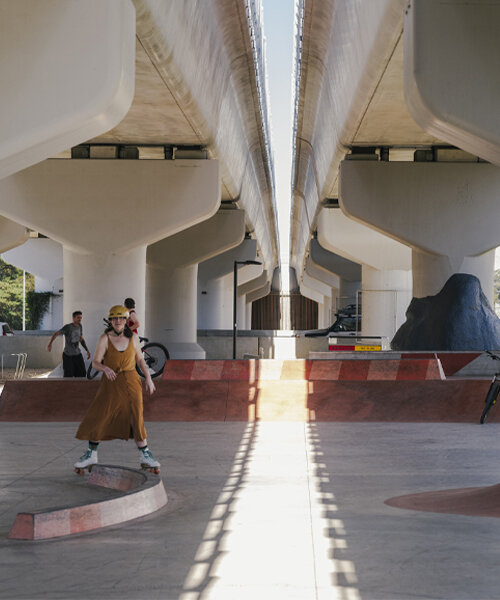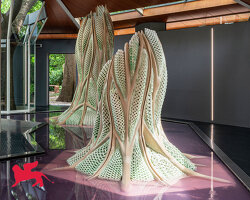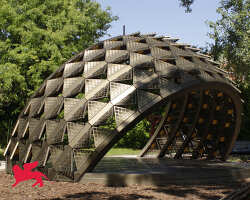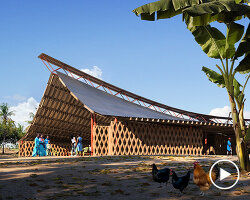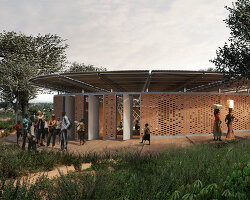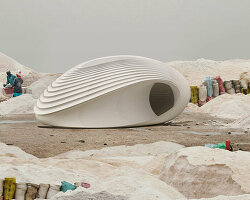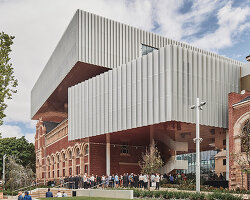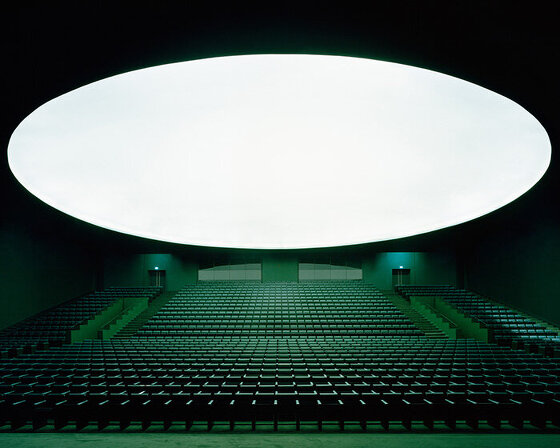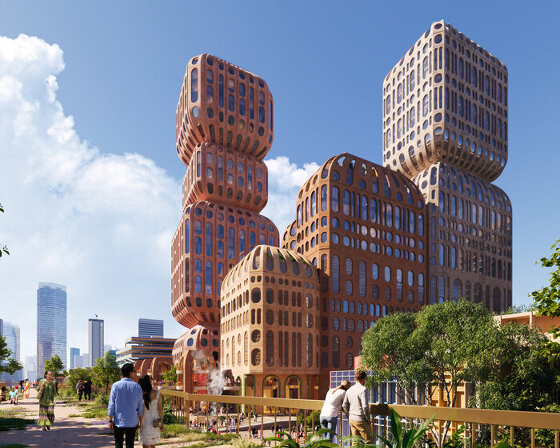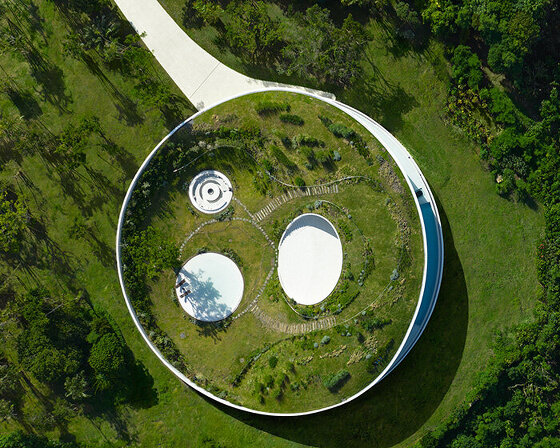hassell discusses holistic landmark study on corridors
Global firm HASSELL has released a new landmark study — Corridors: Designing linear infrastructure in a non-linear world — that examines how highways, railways, waterways, and high streets, can be designed to deliver greater value for all, including economic benefits, social connectivity, and reduced habitat fragmentation. The study’s lead author, Camilla Siggaard-Andersen, argues that a holistic approach is urgently needed to tackle the shared multidimensionality of corridors, one that considers all potential benefits and drawbacks while including all stakeholders. More importantly, ‘the report compels us to understand corridors as networked places, designed to interact synergistically with a much wider, non-linear context,’ she tells designboom.
The report ultimately proposes to break down silos and facilitate holistic thinking through the creation of a common taxonomy and associated workshop toolkit that can help identify and assess the potential impacts of corridors and to develop integrated solutions that meet the needs of all. This is a challenge of significant proportion. According to the Central Intelligence Agency’s World Factbook, the global road, railway, and waterway networks are an estimated 40 million km, 1.3 million km, and 631,000 km long, respectively. These could loop 1,000 times around the Earth, causing high levels of connectivity and fragmentation concurrently. And while built linear infrastructure usually brings significant economic opportunities, the social and especially environmental costs are rapidly mounting.
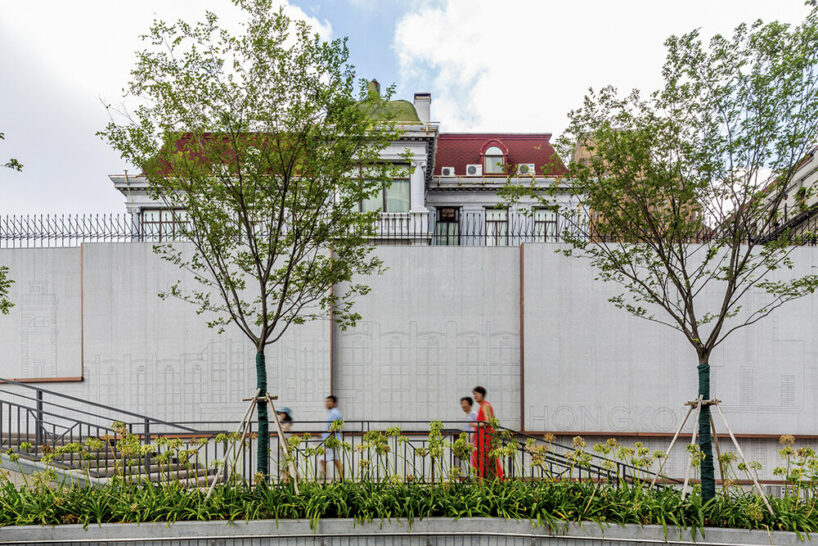
Hongkou North Bund Waterfront Landscape Design, Shanghai, China | all images courtesy Hassell
how breaking boundaries can redefine linear infrastructure
The firm‘s new research report does not shy away from presenting the complexity behind designing corridors. Moving towards a holistic approach requires new motives, technologies, and value definitions that can cut across administrative, physical, cultural, and professional boundaries; designing linear infrastructure must increasingly involve thinking beyond traditional methods. From Metro North West in Sydney to Longgang River Blueway in Shenzen, China, and Colma Creek Adaptation in San Francisco, the report showcases over 30 corridor projects that achieve positive outcomes – for people, the planet, and prosperity. Such a leap in practice demands a coming together of different industries and experts — governments, engineers, architects, decision-makers — to plan and manage these multi-layered corridors.
Having been involved in more than 100 corridors projects worldwide, totaling over 1,200 linear kilometers, Hassell is undoubtedly bringing in new waves of change to linear infrastructures: highlight projects include a planting scheme of 250,000 native plants to re-establish the natural habitat corridor along the Southern Expressway in Adelaide, Australia, and Hassell’s West Bund Waterfront Public Realm that reclaims former industrial wastelands in Shanghai to regenerate 11.4kms along the Huangpu River. Wanting to unpack the report’s extensive studies, designboom sat with HASSELL Camilla Siggaard-Andersen, who walked us through her holistic vision for future corridors.
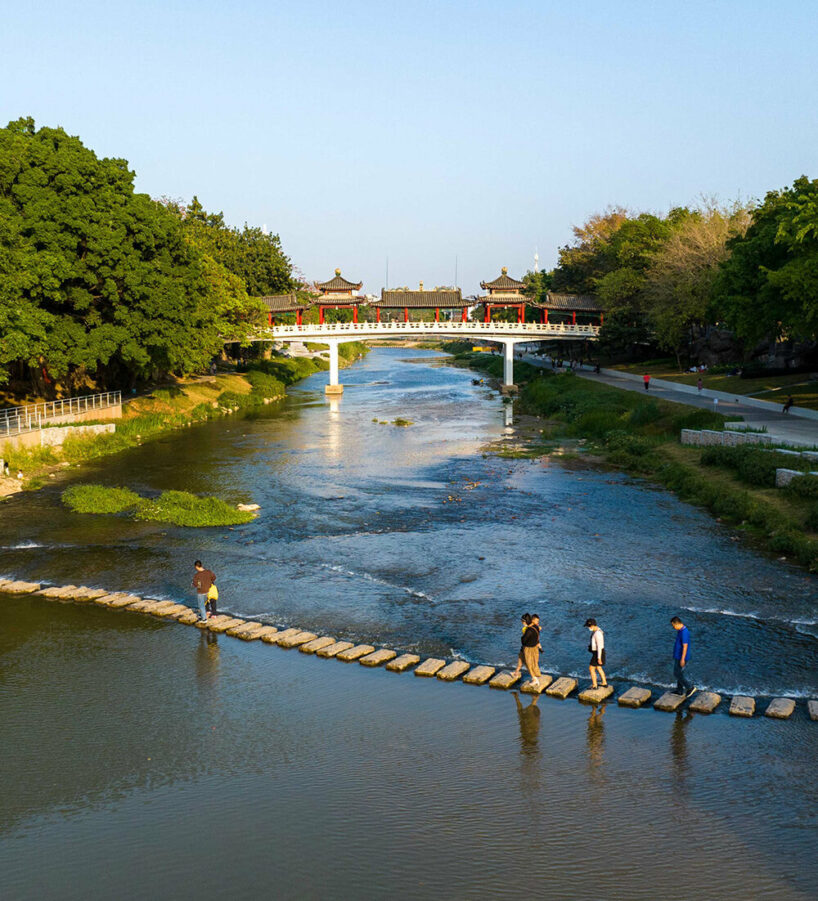
Longgang River Blueway, Shenzhen, China | image © Chill Shine
interview: Camilla Siggaard-Andersen unpacks her vision
designboom (DB): Walk us through the main sections of the Corridors report and how you’ve adapted it as a toolkit for experts across different industries.
Camilla Siggaard Andersen (CSA): ‘Corridors: Designing linear infrastructure in a non-linear world’ takes a cross-sector look at the impact of built corridors on people and the planet and the impact of urban development on natural corridors. From highways to byways, rivers to railways, our planet is crisscrossed by linear pieces of infrastructure primarily designed or used to facilitate the movement of matter across space. These corridors are often envisioned as conduits for creating resilient communities, enhancing economic prosperity, and fuelling innovation. However, when considered in isolation, they can inadvertently create barriers and degrade habitats, resulting in system fragility and decline. The report sets out why, when faced with serious social and environmental challenges, we can no longer afford to persist in constructing linear assets focused solely on a single use. By combining insights and lessons across all the major linear infrastructure sectors, derived from interviews, roundtable discussions, academic literature, media articles, and our own project experiences, our research has identified a common language, shared objectives, and a new approach to breaking down the prevailing silos. We present these as a discussion toolkit to inspire greater cross-sector collaboration towards achieving more holistic outcomes. In conclusion, the report compels us to understand corridors as networked places designed to interact synergistically with a much broader, non-linear context.
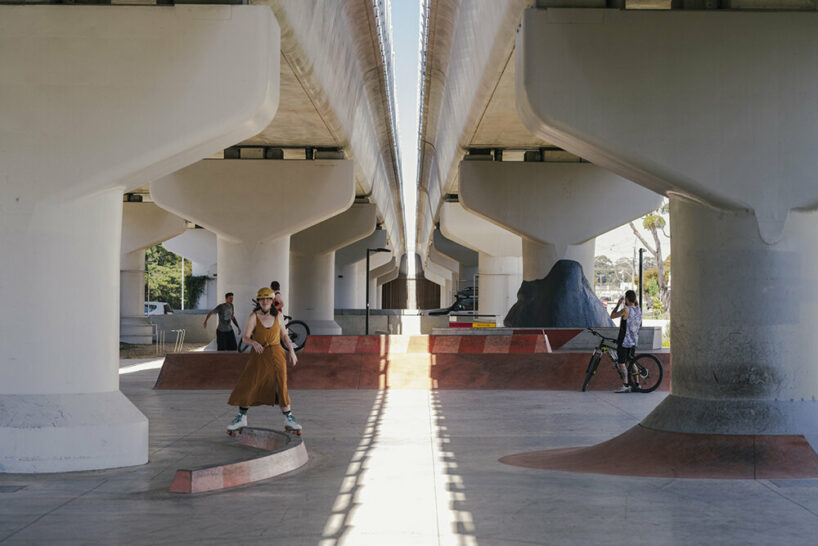
Western Program Alliance – level crossing, Victoria, Australia
DB: Based on your study, which part of our globe is most in need of holistic and regenerative corridors?
CSA: While the study does not evaluate the needs of specific regions against each other, our review of literature from Europe, North America, Australia, China, and Southeast Asia would suggest that every place is more or less faced with the same challenges. In China and Asia, waterways restoration is particularly urgent, while in the UK, the pervasiveness of road systems is a major issue of community fragmentation and habitat degradation. There is also a significant opportunity to regenerate legacy rail networks across the US, Australia, and the UK. However, the overall point of the report is that well-designed, well-integrated corridors are essential to the livelihood of people and nature everywhere.
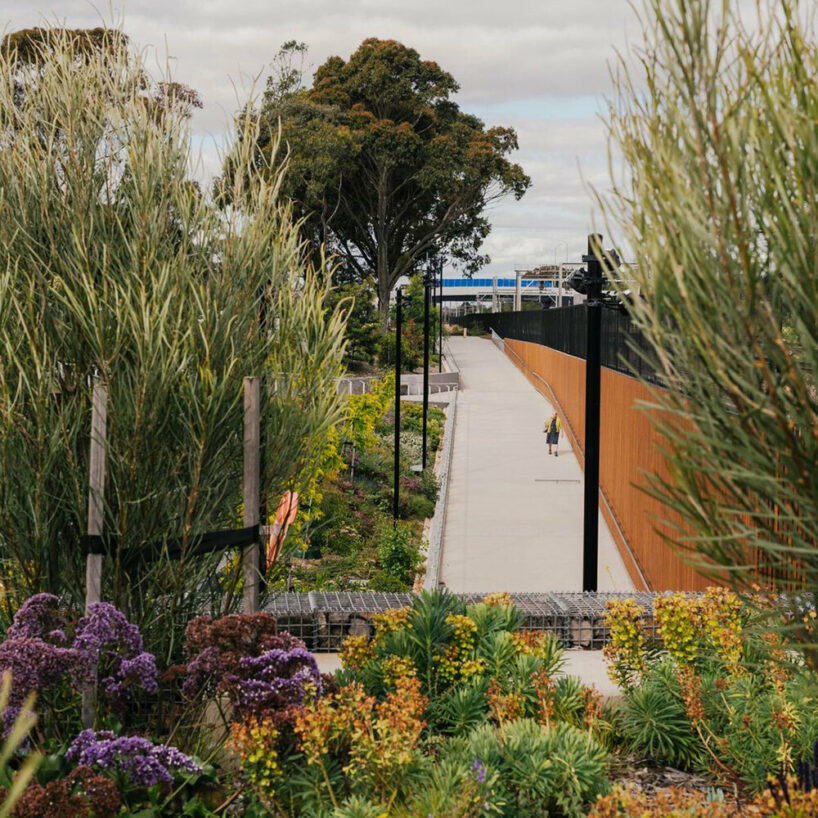
Cherry St level crossing, Werribee, Australia | image © Sarah Pannell via Hassell on Instagram
DB: As a company that has completed over 100 linear infrastructures, which HASSELL-designed corridor best exemplifies your holistic and multi-benefit vision?
CSA: All our projects strive to take a holistic approach to design, focusing on delivering benefits that extend well beyond the initial brief and set site boundary. Our work on adapting Colma Creek in San Mateo County, California, is an excellent example of how a linear space that has historically become a barrier may be transformed into a valuable asset for a place and its communities. Through the restoration of natural habitats and the establishment of new access routes, the project not only enhances the creek’s flood resilience but also enriches the region with recreational, ecological, and economic advantages. Moreover, the project has evolved in tandem with a series of community engagement initiatives, including the development of an educational publication for children aimed at raising awareness and inspiring the next generation of stewards for our waterways. In both Melbourne and Perth, we are involved in several level crossing removal projects, which are inherently motivated by a desire to unlock various benefits for future generations. By reconfiguring the alignment of rail, road, and pedestrian traffic, these projects achieve increased capacity of the regional transport systems while also delivering safer, greener, and more enjoyable local environments.
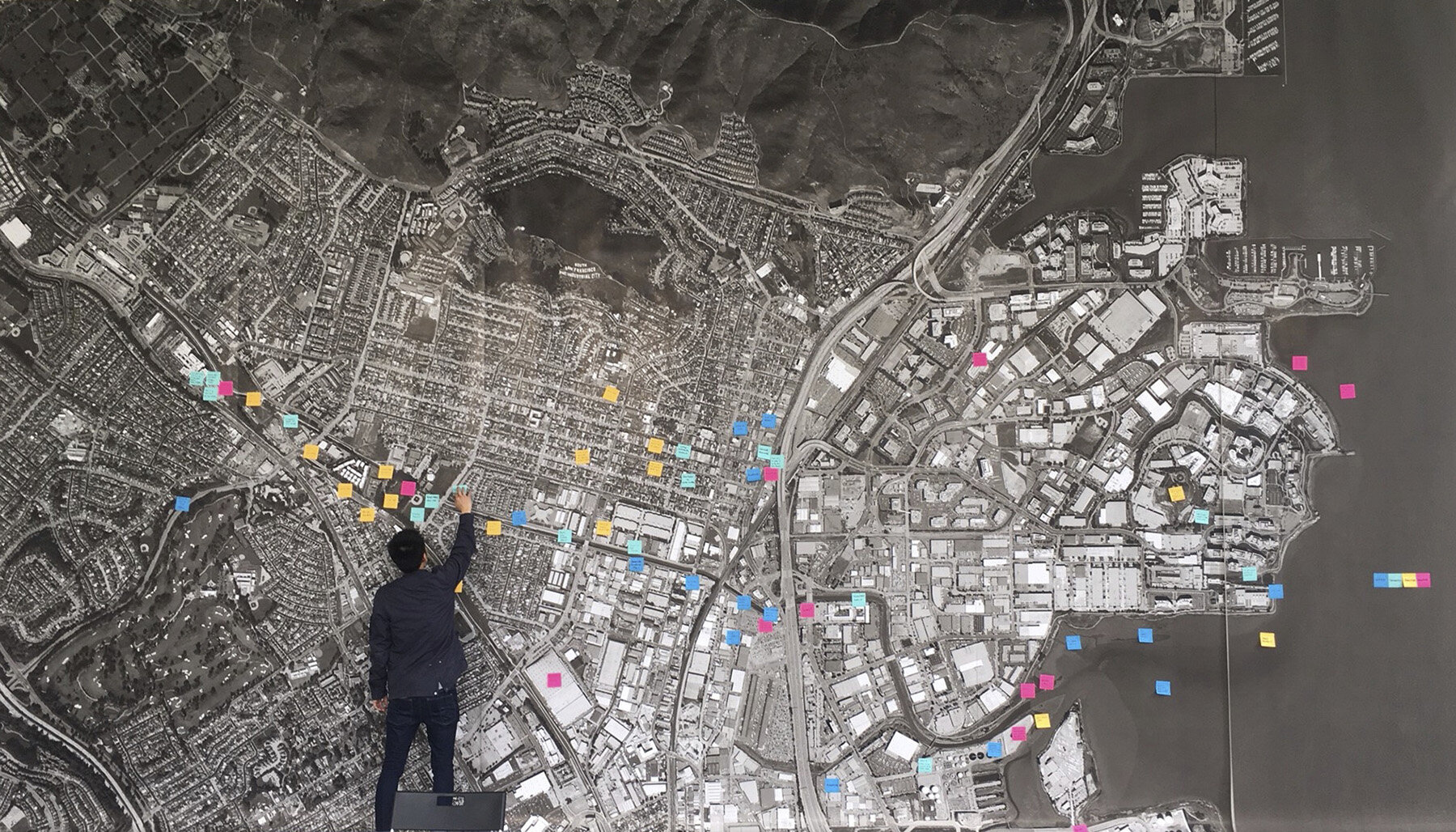
Bay Area Resilient by Design San Francisco
DB: Could you elaborate on the social and environmental costs associated with the traditional approach to linear infrastructures?
CSA: Linear infrastructures have historically been recognised for their pivotal role in facilitating movement of goods, utilities, and resources, including the mobility of human populations, to drive economic progress. However, it is equally important to acknowledge that these linear networks can result in system vulnerabilities and deterioration. Roads and railways, for instance, may divide neighbours, power lines can threaten bird migrations, and degraded waterways could put the health of communities at risk. In our ambition to meet regional, national, and global connectivity needs, we have often overlooked the local-level impacts, which are now showing far-reaching consequences. The extensive proliferation of linear infrastructure has, for example, been identified as a principal contributor to global biodiversity loss due to habitat fragmentation and destruction. Concurrently, issues such as social isolation and sedentary lifestyles have emerged as significant drivers of poor health in many high-income, developed nations. We have now reached a critical juncture where we can no longer afford, neither socially nor ecologically, to prioritise economic objectives over other considerations in corridor planning and design. It is imperative that we assess our decisions through the lens of a triple-bottom-line framework, which takes into account economic, social, and environmental impacts for a more balanced and sustainable approach to corridor development.
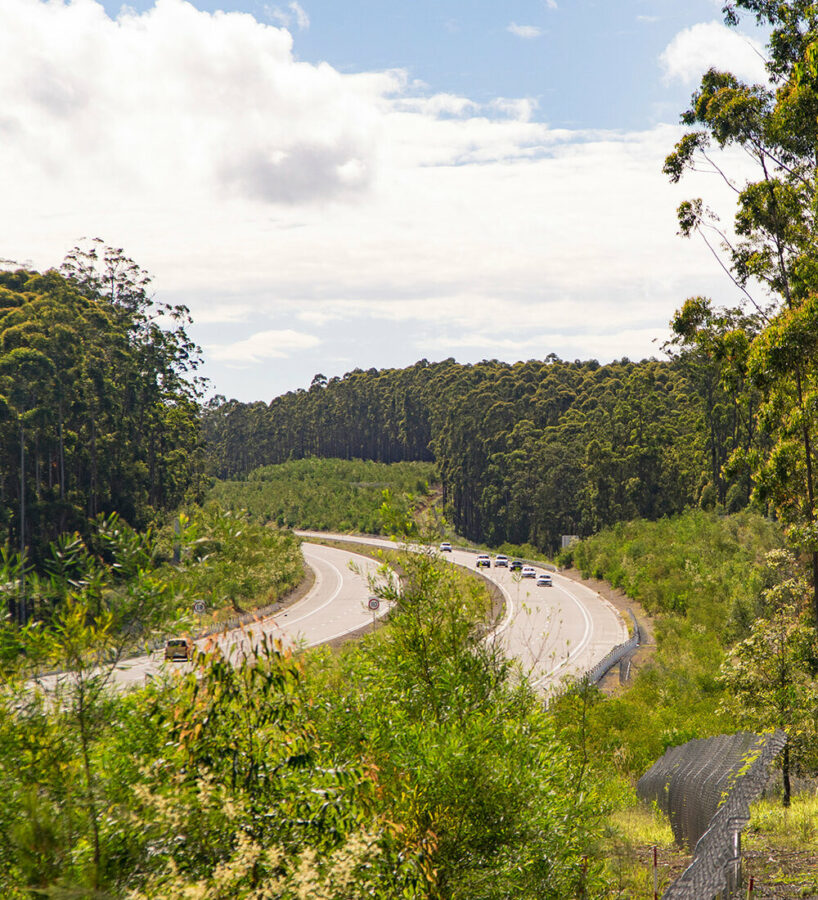
Pacific Highway Upgrade, NSW, Australia | image © Greg Jackson
DB: Being a lead in this research, how do you envision creating more community-oriented corridors?
CSA: The report sets out the importance of considering people, wildlife, and plants in the construction and management of linear infrastructure. It features a toolkit designed to guide us in exploring how corridors might perform a variety of functions for each distinct community. If the remit of infrastructure management agencies was expanded to consider this full spectrum of potential impacts, priorities might naturally shift in the direction of creating more community-centric and environmentally regenerative corridors.
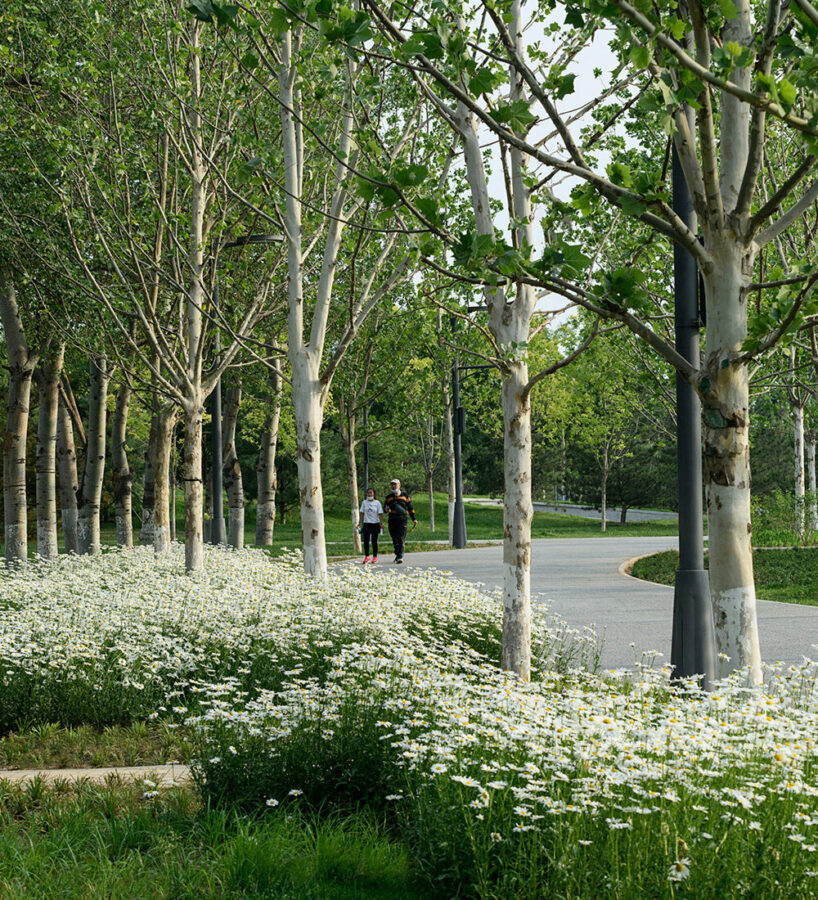
Central Green Forest Park, Beijing, China | image © Xi Rao and Xuefeng Li
DB: You mention adopting new motives, technologies, and value definitions while moving towards a holistic approach. Could you share an example of HASSELL shifting its mindset to deal with a complex project? What lessons arose in the process?
CSA: Hassell is involved in the delivery of Brisbane’s Cross River Rail project, a transformative endeavour aimed at relieving the strain on the region’s current public transport infrastructure through the addition of a 10.2 km rail line, which notably includes 5.9 km of twin tunnels beneath the river and city centre. Within this project’s scope, our design team has collaborated closely with local accessibility experts, working diligently to ensure that the future system offers a genuinely inclusive and seamless travel experience for all. This collaborative process has encompassed the development of tactile maps and models to enhance communication with diverse groups, site visits for real-world testing of both existing and proposed designs, and the creation of innovative solutions tailored to specific requirements. Altogether, this experience has provided many valuable lessons in inclusive design, with a tangible impact on both the project, our practice, and the wider industry.
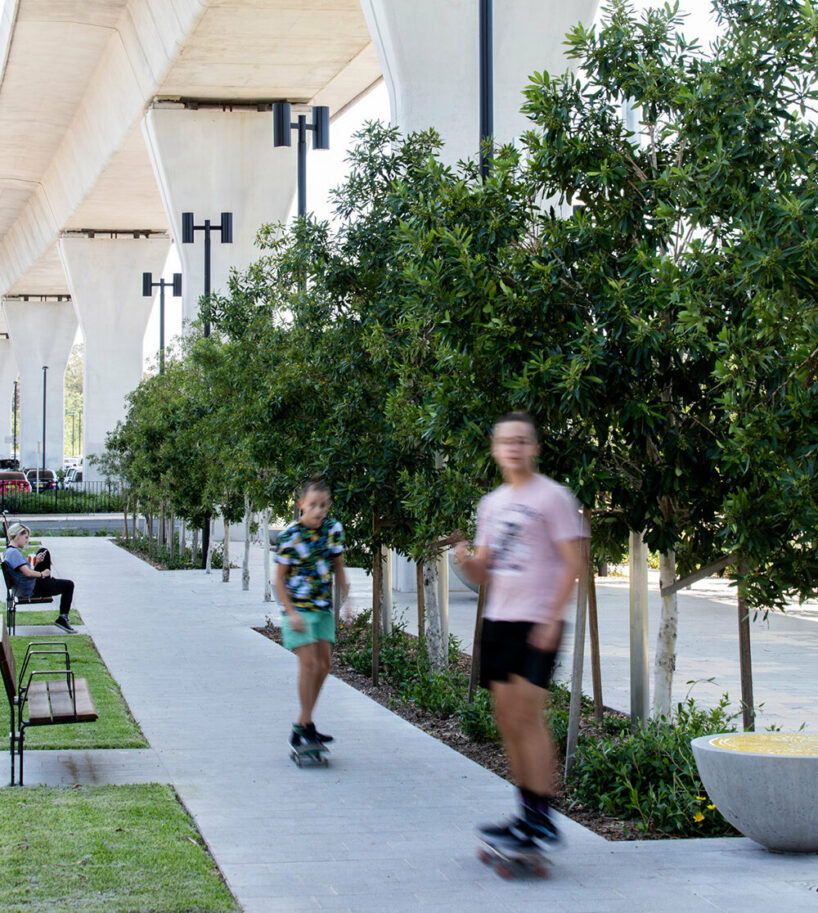
Metro North West, Sydney, Australia | image © Brett Boardman
DB: What challenges should industry professionals expect while designing future corridors?
CSA: The report offers a summary of the primary drivers of change, encompassing environmental, technological, political, economic, and social factors that are poised to influence the design of future corridors. These are not limited to the linear space but impact how the linear space might interact with its surroundings. The escalation in frequency and severity of extreme weather events and natural disasters underscores the need for infrastructure assets to evolve towards greater adaptability and resilience. Simultaneously, escalating construction and operational costs place heightened demands on infrastructure owners and managers to streamline their systems while continuing to meet growing customer demands. Moreover, the swift pace of innovation and societal change, driven by digital technology, is ushering in entirely new mobility patterns and corridor usage scenarios, necessitating fresh approaches to future network planning and envisioning. To effectively navigate and address these and other challenges, industry professionals must increasingly embrace cross-sector collaboration and uncertainty in the design process, adopting flexibility and experimentation as guiding principles for future corridor projects.
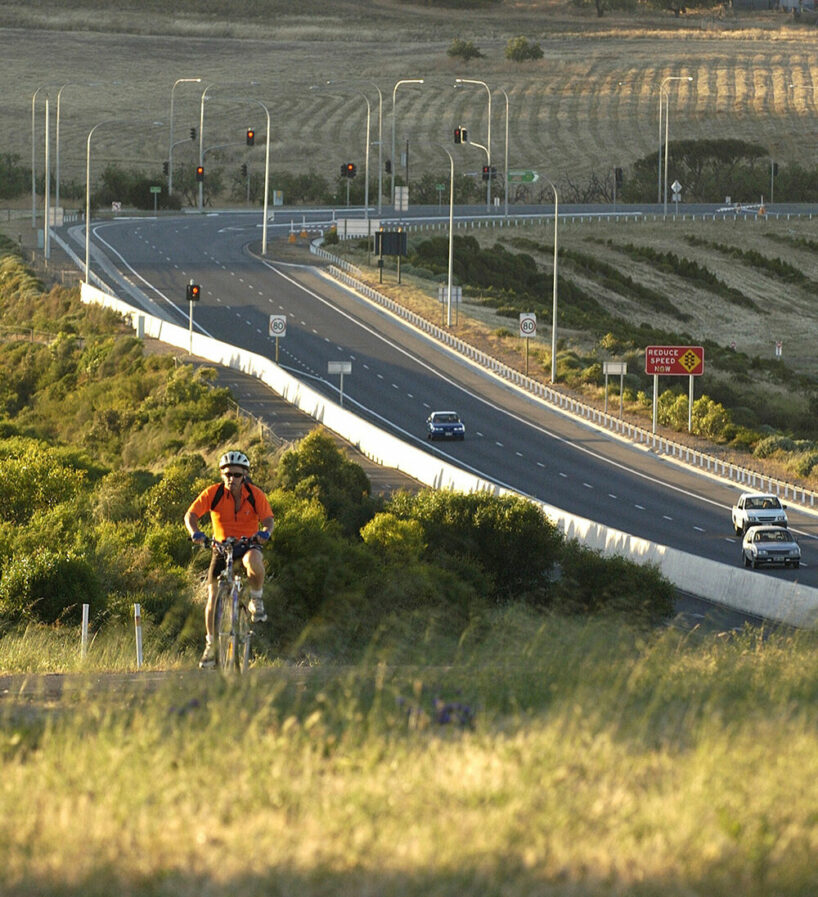
Southern Expressway, Adelaide, Australia | image © Simon Stanbury
DB: Landscape Architecture and Urban Design have long been considered multidimensional disciplines, covering many projects, scales, and goals. Both represent integral components of linear infrastructures; how do you envision these disciplines evolving in the next decade or so?
CSA: The findings in our report call for the involvement of a wide range of practitioners in corridor development projects, including an increased role for landscape architects and urban designers. These disciplines may evolve in the direction of playing a greater role in facilitating conversations and convening stakeholders, from experts to end-users, ultimately bringing together diverse perspectives around a common vision. In the face of digital disruption, architects and designers may also increasingly be required to articulate the value of design as a collaborative process, not a fixed output.
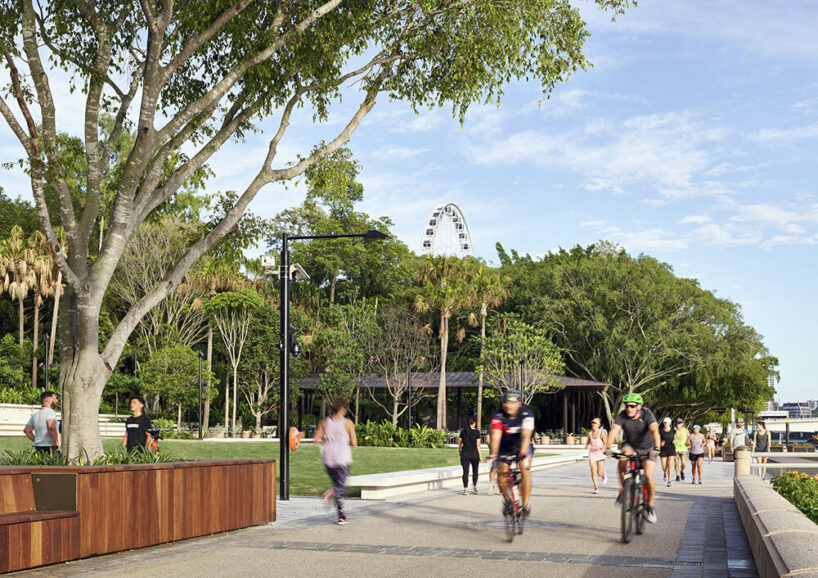
Riverside Green, South Bank Parklands, Australia
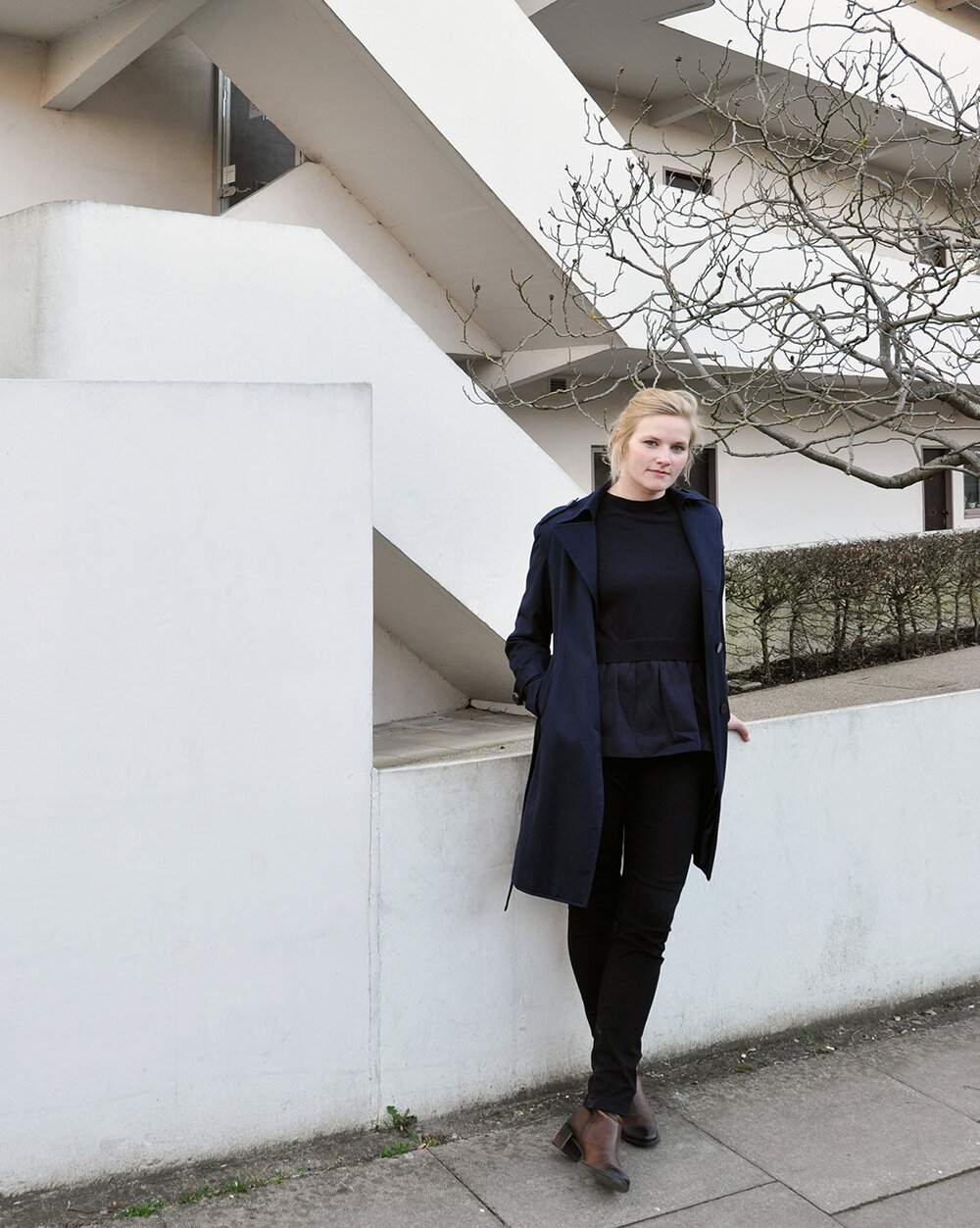
the corridors study’s lead author, Camilla Siggaard-Andersen, from HASSELL
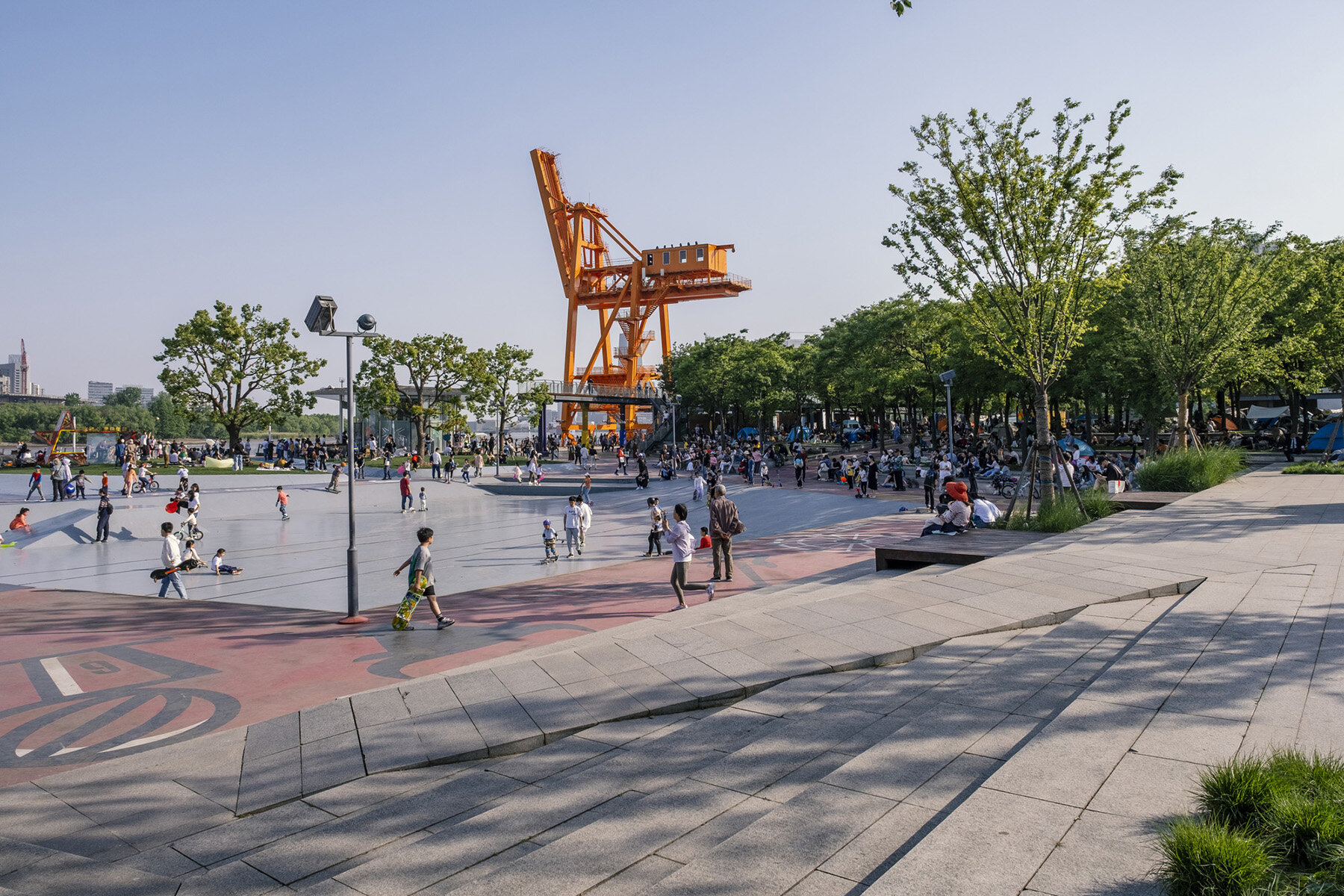
West Bund Waterfront, Shanghai, China
project info:
study name: Corridors: Designing linear infrastructure in a non-linear world
interviewee: Camilla Siggaard-Andersen
design firm: HASSELL studio | @hassell_studio
